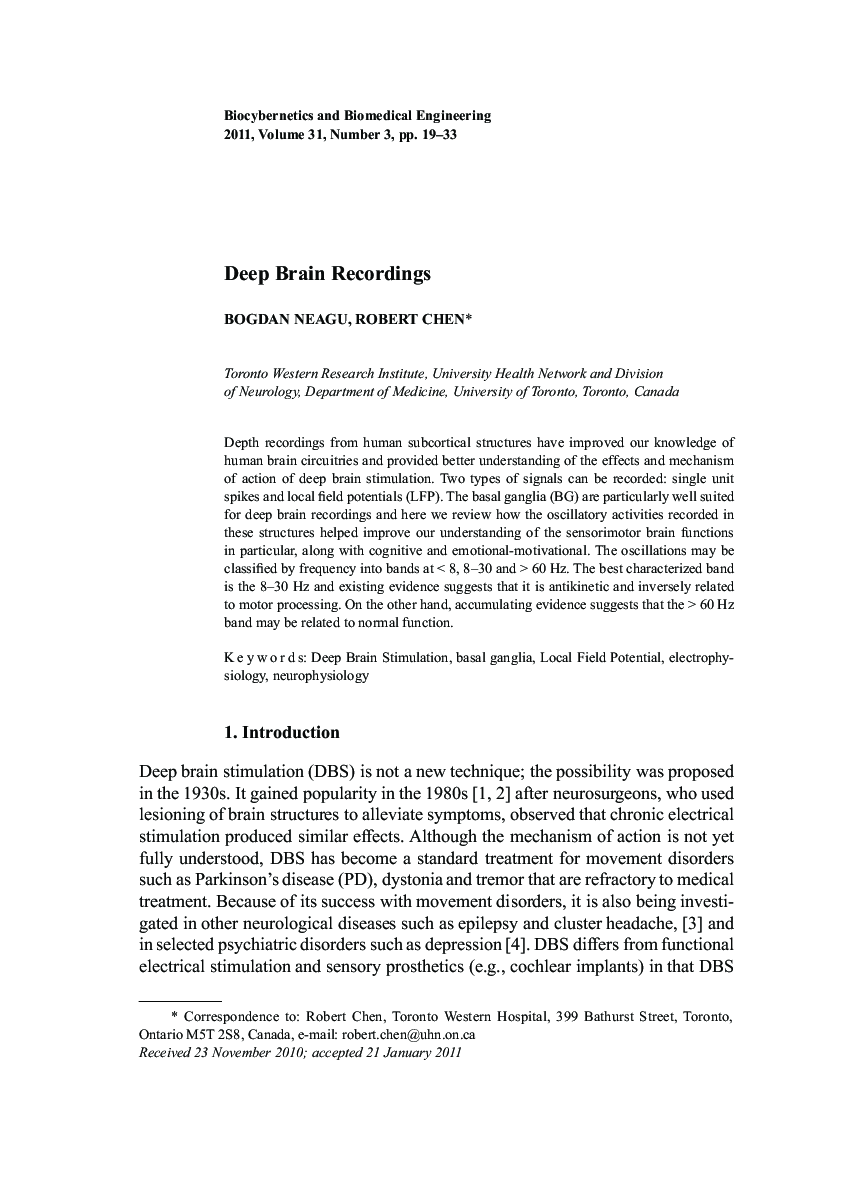| Article ID | Journal | Published Year | Pages | File Type |
|---|---|---|---|---|
| 5260 | Biocybernetics and Biomedical Engineering | 2011 | 15 Pages |
Depth recordings from human subcortical structures have improved our knowledge of human brain circuitries and provided better understanding of the effects and mechanism of action of deep brain stimulation. Two types of signals can be recorded: single unit spikes and local field potentials (LFP). The basal ganglia (BG) are particularly well suited for deep brain recordings and here we review how the oscillatory activities recorded in these structures helped improve our understanding of the sensorimotor brain functions in particular, along with cognitive and emotional-motivational. The oscillations may be classified by frequency into bands at < 8, 8–30 and > 60 Hz. The best characterized band is the 8–30 Hz and existing evidence suggests that it is antikinetic and inversely related to motor processing. On the other hand, accumulating evidence suggests that the > 60 Hz band may be related to normal function.
